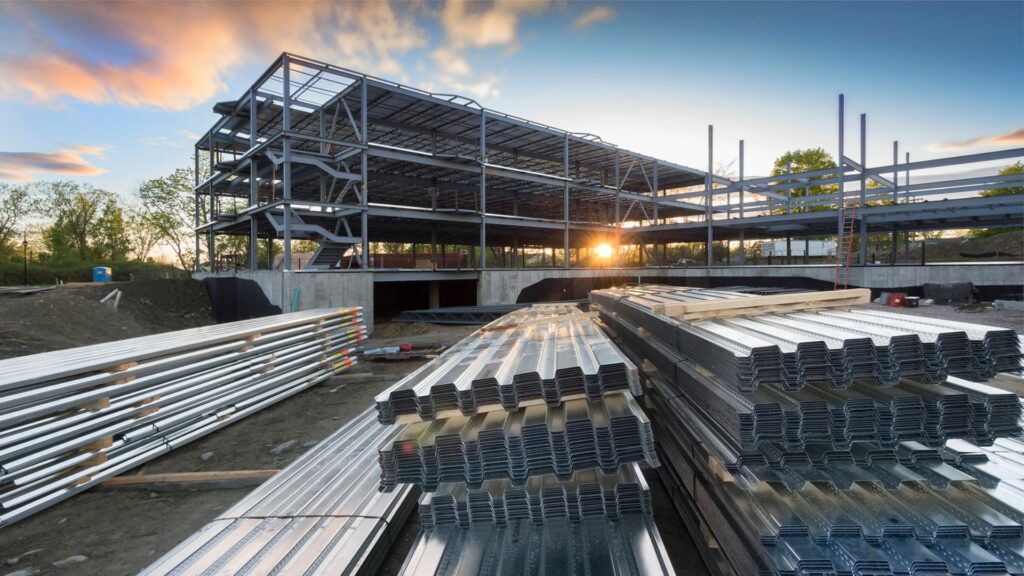The construction industry is booming, and there are plenty of government contracts and private projects to bid on. With stiff competition, it is always easy to underbid and make losses. Contractors need to understand their profit margin to ensure that their businesses perform well.
The average profit margin is a percentage of the ratio of the profit to overhead and operating costs. In the construction industry, the average profit margin is approximately 6%. However, some businesses may have a higher margin. Construction companies must consider costs to make a decent profit.
Most construction companies fail to consider overhead costs when preparing a bid, creating potential problems later. Ignoring overhead costs can affect the profit margins, project lifecycle, and cash flow for operations.
For a construction company to be profitable, it must factor in costs and understand how to calculate profit margins. Understanding the relationship between overhead costs and profit margins in construction is crucial.
To be a successful general contractor, you must learn to calculate overhead and profit margins. Knowing how much to charge for your services is easier once you understand the average profit margin for the construction industry.
Table of Contents
What is a commercial profit margin?
After subtracting both hard and overhead costs from your full payment, profits are the funds left over. Hard costs include supplies, materials, and labor. Commercial profit margin is the ratio of the profit to the overhead and operating costs.
What is overhead?
As a contractor, it is important to understand your overhead costs and profit margins to price your services correctly. Overhead refers to the cost of running your construction business, including direct and indirect costs. Overhead includes equipment rentals and administrative costs.
How to calculate commercial profit margins
Calculating commercial profit margins is important to avoid bidding too low for a job. It helps contractors understand how to calculate their money and write down a good bid.
Understanding how to calculate commercial profit margins helps the contractor ensure that they will make a profit after covering all the project costs. The ideal profit margin target is 8% to 15%.
Profits do not always guarantee a higher salary for the contractor. The contractor’s salary is included in the overhead expenses. Any profits made should be reinvested in the business.
To calculate overhead and profit for a construction project, you need to look closely at the various expenses and costs that go into a job. This includes all fixed monthly expenses such as insurance, rent, and debt payments.
Consider the indirect costs which keep the lights on but are not directly tied to any project. Indirect costs include legal fees, office staff salaries, marketing, and maintenance fees.
Now add up all the project’s direct costs, such as tools, equipment, and the cost of hiring specialized personnel.
The above calculations sum up your overhead, and the cost must factor into the bid. For example, if you have a monthly overhead of $4000, you must mark up your bid by at least $4000 to cover the cost of doing the job.
Note that you can spread indirect fixed costs across multiple jobs if you work on multiple projects. However, you must account for direct costs associated with a specific job in the bid for that job.
Once you have added the markup to cover the overhead, you can further mark up your bid to give yourself a profit. For instance, if a job requires $2500 in labor and $500 in overhead, you can bid $3250 for a 5% profit.
The formula is revenue – overhead = job costs and profit.
For example, if your revenue is $1,000,000 and your overhead is $200,000, your profit and job costs will amount to $800,000.
Since $800,000 is the total job cost and the profit, you can calculate your profit by subtracting your job cost from this figure. Let’s say your job costs $700,000, and your profit will be $100,000.
$100,000 is then 10% of the revenue. That is $100,000 (profit) ÷ $1,000,000 (revenue) = 0.10 (10% profit margin).
While calculating profit is complicated, figuring out your overhead and desired profit margin is half the battle won. Understanding these calculations will help you to sell properly and make enough profits to grow your construction business.
Contractor markups and profit margins vary, and contractors must budget for unexpected price increases without ignoring overhead and desired profit. Your markups will not serve your business well if they only include profit margins and not overhead.

How to increase commercial profit margins
Businesses exist to make a profit and grow. As you take on bigger projects and more volume, you must have the vision to grow your business by increasing commercial profit margins. Here are some tips to increase your profit margins and reduce overhead costs.
Quality talent
Hiring the best talent in the industry is an ingenious way to improve your profit margins. Commercial construction companies are more likely to succeed when they focus on attracting, hiring, and retaining qualified employees.
Be selective
Finding a job can be difficult, but being more selective rather than being the lowest bidder is usually the way to go. Quality customers pay on time, have a good reputation, and are more likely to share common values. It’s well-known that the best clients who don’t micromanage and trust your professional skills tend to pay more and pay on time.
1. Profit margin
One way to make more money is to find and increase your profit margins. If your business makes 8-9% profit from your work, consider increasing your projected profit margin by 1-2%.
However, raising prices overnight for existing customers is not a good idea. Point out to them that you are aligning your company’s profit margins with the rest of the industry and slowly increasing them over the next six months. For new customers, the new charges will apply.
2. Technology
Successful commercial construction companies also invest in new technologies that improve work tracking, protect against risk, and provide key performance indicators.
If you want to reduce overhead, consider streamlining and automating key areas of your business. With construction management software, you can create more efficient accounts payable and receivable processes and free up office staff.
The move to automated software is a big boost. Subscribers and suppliers can submit paid apps online, allowing apps to be processed faster and avoiding payment delays and associated problems.

3. Overhead
Calculate your overhead and factor it into your price to avoid paying for these costs out of your pocket. The goal of the contractor is to reduce overhead as much as possible.
You can reduce your overhead by investing in an account to manage your finances. Hiring an account will cost you money but help you cut costs in the long run. Consider finding a more cost-effective space to cut down on rent and utilities.
Additionally, consider renting equipment instead of buying it where possible. While buying equipment is a worthy investment, it may not be necessary as you start.
You can also reduce overhead by trimming your workforce. Ensure that you make sound hiring decisions to get the most out of your talent. Consider outsourcing some work to avoid paying full-time wages for seasonal work.
4. Productivity
Eliminating waste also saves money. Older equipment must be replaced when performance degrades, and contractors must take to save operating costs while safely implemented.
Also, spend some time improving your accounts payable. Late fees can affect your bottom line if you don’t pay your material suppliers and subcontractors on time.
If contractors bid correctly, they will consider their interest in bidding. If clients pay early, they minimize the chargeable interest. This reduces overhead and improves profit margins.
5. Unnecessary costs
Construction projects are prone to waste due to unnecessary costs. You can increase your profit margins by eliminating hidden costs from the project budget. Eliminating unnecessary costs will help save costs while also improving efficiency.
Some common unnecessary costs include: change orders, oversized building systems, increased installation and material costs caused by the poor layout of building systems, and overlapping equipment.
Summary
To build a successful commercial construction business, you must understand overhead costs and profit margins. Understanding overhead costs and profit margins allow you to write down a bid to help you make your desired profit margin. First, you will need to determine the potential cost of the job and account for unexpected price increases.
The key to increasing profit margin is reducing overhead, increasing productivity, reducing waste, adopting technology, and eliminating unnecessary costs. Contractors must understand how to mark up their bids to cover overhead and job costs. You must know how much profit you intend to make before you submit a bid for that job.
Minimize your profit margin by understanding overhead and profits in construction. Remember, your profit is what you have left after subtracting overhead and job costs from the original revenue. Your profit margin is expressed as a percentage and is calculated by dividing the revenue by the profit.

